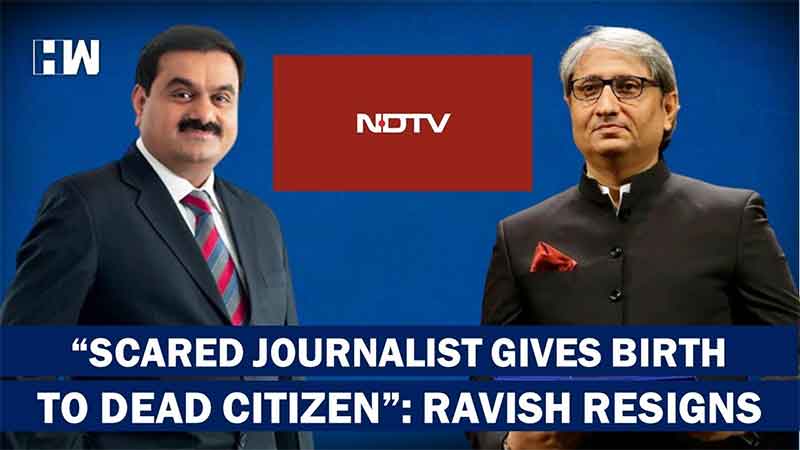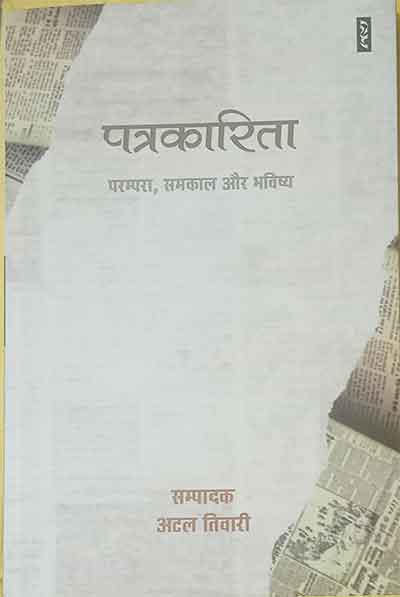
Eight police personnel lost their lives in the Kanpur crime scene in Uttar Pradesh in a gunfire from the history-sheeter, criminal Vikas Dubey. Vikas Dubey is not the first or the last criminal in politics, nonetheless, he has again exposed the nexus of politics and criminals.
The Bahubali saga is not an old story in the politics of Uttar Pradesh. The past decade of 90s recap the notorious crimes, where most of the times criminals coming from the upper caste background, supported by political leaders, controlled the local politics.
The Kanpur based criminal Vikas Dubey also has its origin in 1990s. From the small robbery cases to gang war, and later the murder of a sitting MLA, this is the historical background of a history sheeter with 60 registered FIRs. In spite of these 60 FIR’s Vikas Dubey, a Brahmin Bahubali by caste choose to roam outside the jail, without any fear.
Looking back into some of the few incidents of past tells a different story altogether. Unnao Rape case, which attracted the nationwide media attention was another example of the law and order situation in one of the biggest populated state in India.
The deadly incident where a rape survivor was being traumatised regularly from the hands of another sitting MLA ended on the loss of her father, her uncle and later, she herself was admitted to hospital with her lawyer after a brutal road accident. On the other side, the cognisant national consciousness can sense the acquittal of Chinmayanand who was blamed for the rape of a law student. Chinmayanand is a close political ally of the politics of Yogi Adityanath. Many of the times, they have shared the stage together. But, my concern here is the use of constructed categories for different people, belonging to different social background.
Mainstream media has the capacity to use their labelling theory to determine who fits with which of the label. However, labelling, by an institution has never been free from its inherent biases. An institution which retains a doubtful silence on the issue of representation within media houses and keep going on the whims and fancies of the capitalists houses, will never do justice with the marginalised.
In the mid of the April, the entire country was shocked due to the exponent rise of the Corona Virus. A leading Hindi news channel anchor was arguing that India had already won the fight against Corona, is now appearing to lose the battle due to the Jamaatis. Jamaat or Tablighi Jamaat is a missionary movement within Islam which encourages its fellow proponents to depart to the original practice of Islam in terms of rituals, dress and their personal conduct, as it was practised during the time of Prophet Mohammed. The Jamaatis were termed as terrorist, corona bombs and in the pretence of these Jamaatis, state got enough time to divert the issue of health infrastructure. Many Muslim vendors were beaten, many were termed as a threat to law and order.
Mainstream Hindi media took it as break to divert the health question with the larger narrative of nationalism. Corona pandemic is a global challenge, but it has a national character too. When a global challenge stretches to the national level, it works in consonance with the other problems of the time. Following the global pattern in a local milieu, nationalism is regarded as the best remedy for any problem which creates a threat for the entire nation. It has potential to construct a national identity which can supersede the regional and local differences.
This idea can be aptly discussed in the framework provided by Benedict Anderson, in his famous work Imagined Communities: Reflections on the Origin and Spread of Nationalism. Anderson points out that the idea of nationalism came into existence with the print capitalism. The phenomenal innovation, called print, provided a medium through which many people living in the different corners of the certain territory, came into contact of the similar kind of literature, content and the news. The consumption of the similar content in a certain time and space blurred the diverse boundaries and formed an abstract thread among the masses. However, print with its limited reach, could only affect to a limited populace. It was the intervention of capital which ensured its reach to the different corners of the nation. German philosopher Jürgen Habermas has discussed the transformation of public sphere in detail. The present public sphere in which we all are living now, is the part of a cultural industry which embraces the capability to bind the nation together through a certain kind of narrative.
Print media, whether it is Hindi, English or any other vernacular language print, has strongly extended their influence, in spite of the rise of television industry. This was in contrast to the global trend. When print medium was losing their mark, due to the rise of television media, the Indian print media industry flourished in accord with the rise of television industry. The advance in the literacy rate and the growing Indian middle class were few of the reasons behind it. Print medium or the television, both are the part of the public sphere and they play a major role in setting out the agenda of the discussion. In that way, public sphere exercises an indispensable role in the identity construction too. Benedict Anderson and Habermas have a similarity that both has a common point of dissemination of ideas, its medium and the setting of an agenda of discussion.
In the Indian context, the entry of capital into print media, created the similar opportunity and many of the local newspapers like Dainik Bhaskar, Dainik Jagran and many other vernacular newspapers left behind the English medium newspapers. What was this change actually? This was the change in the structure of the society during 90s which includes the rise of aspirational new middle class, including the larger demography which had newly been inducted into the literate category and their exposure to an open economy changed their world view.
The creation of national identity in the sense of ‘we’ and the ‘other’ has been part of the political projection in Indian politics and it was popularised during 90s at its new heights. It gets reflected in different institutional forms as well as among general masses. It comes out of a Pandora’s box as per the requirements of the state and its different investors. One of the reason to discuss the idea of nationalism, before discussing the formation of social categories is to highlight the stretch of these communication means and the inherent characteristic of nationalism, abide with it in abstract manner. It helps to determine the other agendas as per convenience.
‘Terrorist’, according to the Oxford dictionary, is a term that is used to denote a person who uses unlawful violence and intimidation, especially against civilians, in the pursuit of political aims. Whereas, Don, is a term that has a different English meaning, but in Hindi usages, it gives the sense of a leader of a criminal gang. On the other hand, Bahubali, is a popular term in the politics of North India. Bahubali, as the term suggests, those who has the muscle power, denotes to a person who doesn’t only have the control over land and other properties, but also capable to influence the decisions through his muscle power. Bahubalis, in spite of their criminal involvement maintains an aura in their region. Terrorist are treated as they have waged a war against the sovereignty of a nation whereas, Don and Bahubalis, in spite of their similar background of terror, are still considered as a pathological condition within society.
Media plays a vital role in the construction and institutionalisation of these categories. The fusion of these categories as per the convenience echoes the hotchpotch of the terminologies. The category of terrorist symbolises a fear and the labelled individual and his family face a social boycott. He becomes the subject to hate. Undoubtedly, terrorism is a problem for the entire world, but the similar construction is used for the innocents, who comes out of court without any conviction. However, the tremors of stigma goes with them and their families for their entire lifetime, as a bad chapter. The formation of category called terrorist also gives extra-constitutional authority to the police and state apparatus with social sanction, to go up to any extent to save the nation.
In the similar context, the portrayal of Bahubali, gives the glimpse of a socially, economically and a politically well off individual. In North India, Bahubalis have always been involved in different criminal acts. They enjoy political leverage in spite of their criminal background. Many of the times, we get to know about the Bahubalis who won election from inside the jails or worked for their political masters. Raja Bhaiya, Mukhtar Ansari, Shri Prakash Shukla, Virendra Pratap Shahi, Harishankar Tiwari, Dhananjay Singh, Munna Bajrangi, Rajan Tiwari, etc. are the few names of such Bhaubalis. However, with some similarities, with Bahubali, Don is a term that embodies power and panache. During 90s, there were many Dons like Dawood Ibrahim, Chota Rajan, Arun Gawli, Hazi Mastan, Karim Lala, Manya Surve, etc. who had a close alliance with film industry and control over trade and politics. Bollywood has paid off very well to these contacts with D-company by depicting the heroic world of underworld, where the Don is as much social as of his criminal involvement. The life of Don appeared full of adventure and glamour. On the one hand, the life of a Don, posed a serious challenge to the police department, whereas their lives and character were socially sanctioned. The depiction of Bahubali has been so popular in some of the recent web series like Sacred Games, Mirzapur, Bhaukal, Raktanchal, etc. on the different online platforms. The common theme apart from the different lives is the strong depiction of emotional aspect of the protagonists. Can the different sheds of life of a terrorists be depicted with the same enthusiasm and the zeal of art? Why does someone become Don and Bahubali, in spite of so many assassinations and FIRs and someone becomes terrorist?
What is the point which marks the differentiation between the category of terrorist, Don and Bahubali? Following the media reports, one can easily discern that a religious identity is attached with terrorists. Most of the times, they belongs to the Muslim community. Likewise, when communal clashes were erupted in many of the north Indian cities during Ram Janmabhoomi movement, Dainik Jagran, a prominent Hindi newspaper used the term ‘Dangai’ to symbolise the Muslim community. In the similar narrative, Hindus were depicted as ‘victims’ and ‘reactionary’. The ‘other’, in the conception of nation is the other in all the frames where it appeared fit. In that sense, nationalism is not only a source of affiliation between the people living in a territory, but it also differentiate the ‘others’, on the basis of different markers, like the origin of religion, caste, race, etc.
As like many other institutions, media also holds the power to give such narratives of otherisation, an institutional character. One side, an assailant becomes terrorist and threat to the nation, on the other hand, after so many assassinations and offences, a Bahubali remains socially and politically acceptable. The patronage, they enjoy from their political bosses, trickles down to the poor and needy in their locality, which helps them to nurture their social image. However, the ascribed position within society also helps in the formation and institutionalization of the categories. For example, ones upper caste affiliation, their social, cultural and economic capital or the belongingness to the particular religious group, etc. shapes their social appearance. One needs to recap that when the Sikh separatist groups demanded for a sovereign Khalistan, they were termed as secessionist or fundamentalist. Alike, when DSP Davinder Singh was caught in a terror case in Kashmir, none had expected that he will get the bail soon. Let it leave the hope of media trails with their favourite category of so call ‘terrorist’, which seems somehow reserve for the certain groups only. In the case of Vikas Dubey, the killings of eight state officials couldn’t convince the media houses to call him a terrorist. Is it not the biasness towards certain groups and favouritism?
Categories help to understand the certain problems in depth, but the chauvinisms with misconstructions deteriorate the changes of democratisation of public sphere. The hostile treatment with a particular community, by branding them as terrorist and the glorification of Dons, Bahubalis and history-sheeters will no way help to resolve the pathological condition of a society. The elimination of imposed stigma takes a long time, even when a dedicated effort is made out in that direction. Stigma disassociates individual and communities from the other social groups and its stain remains associated within the psyche of people. When Habermas idealised public sphere, he was optimistic about the representation of different voices while making these spaces more democratic and public friendly where there would be no obstacle for communication. Nevertheless, partial construction of categories and the associated stigma, neither makes the public sphere democratic nor it removes the obstacles of barrier free communication.
Arun Kumar Kushwaha is working as a doctoral fellow at Centre For the Study of Social System, Jawaharlal Nehru University, New Delhi. E-mail Id- [email protected]
SIGN UP FOR COUNTERCURRENTS DAILY NEWSLETTER















































